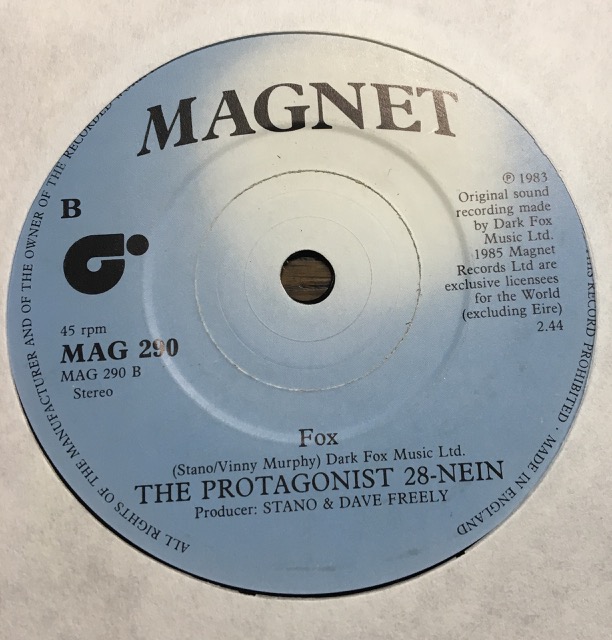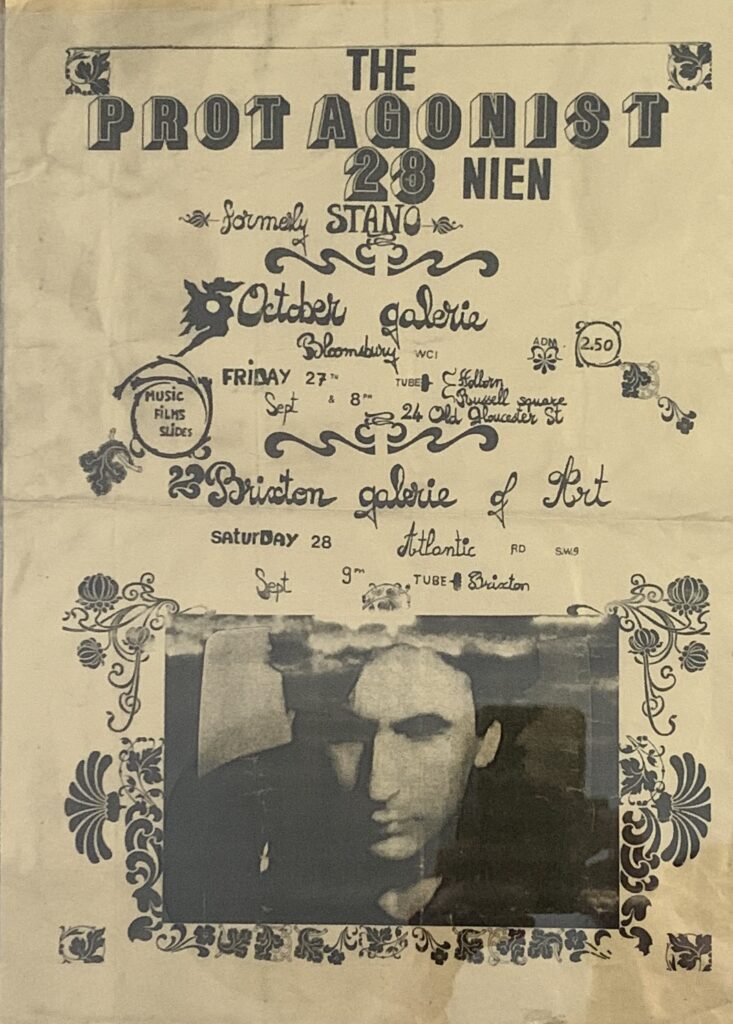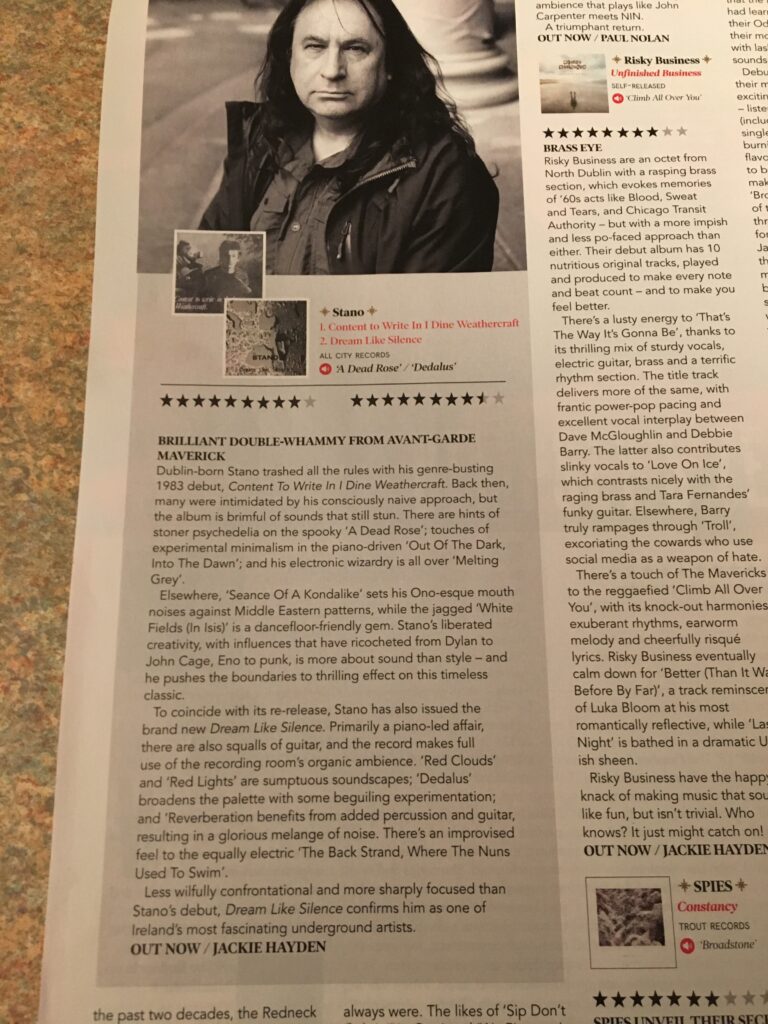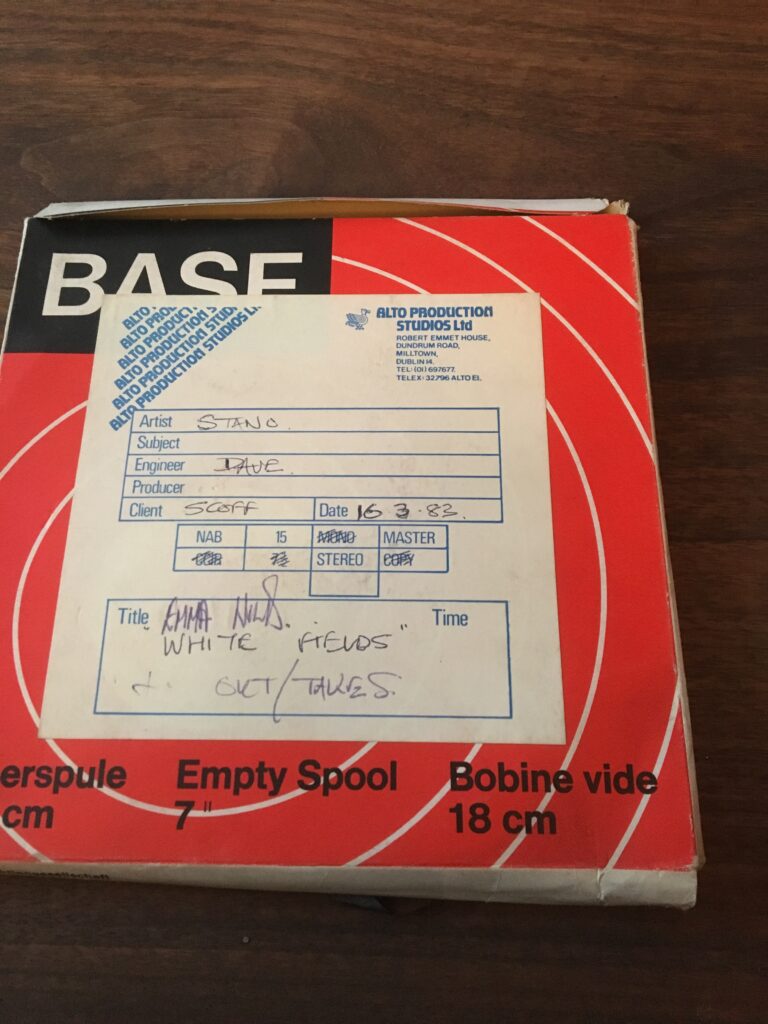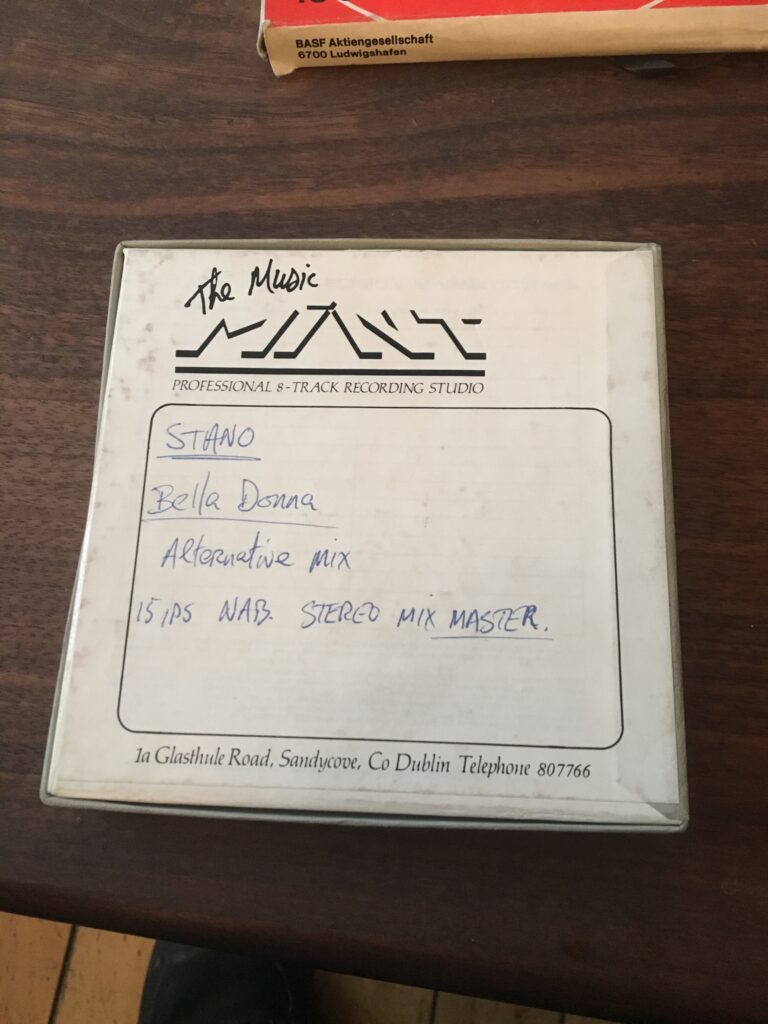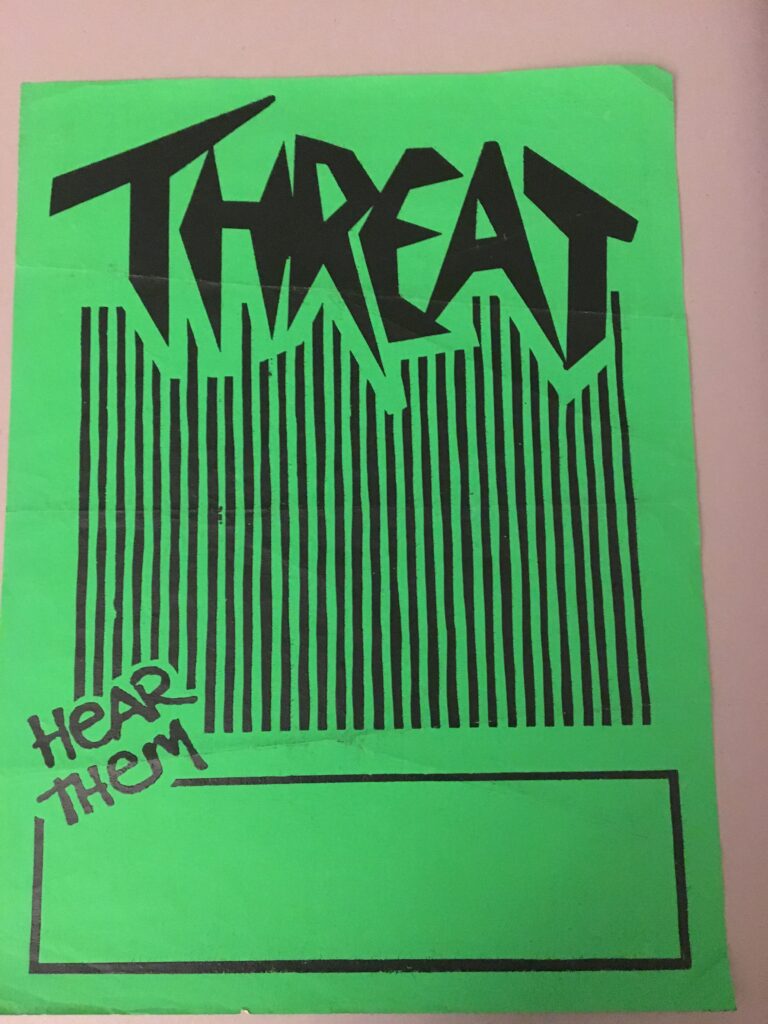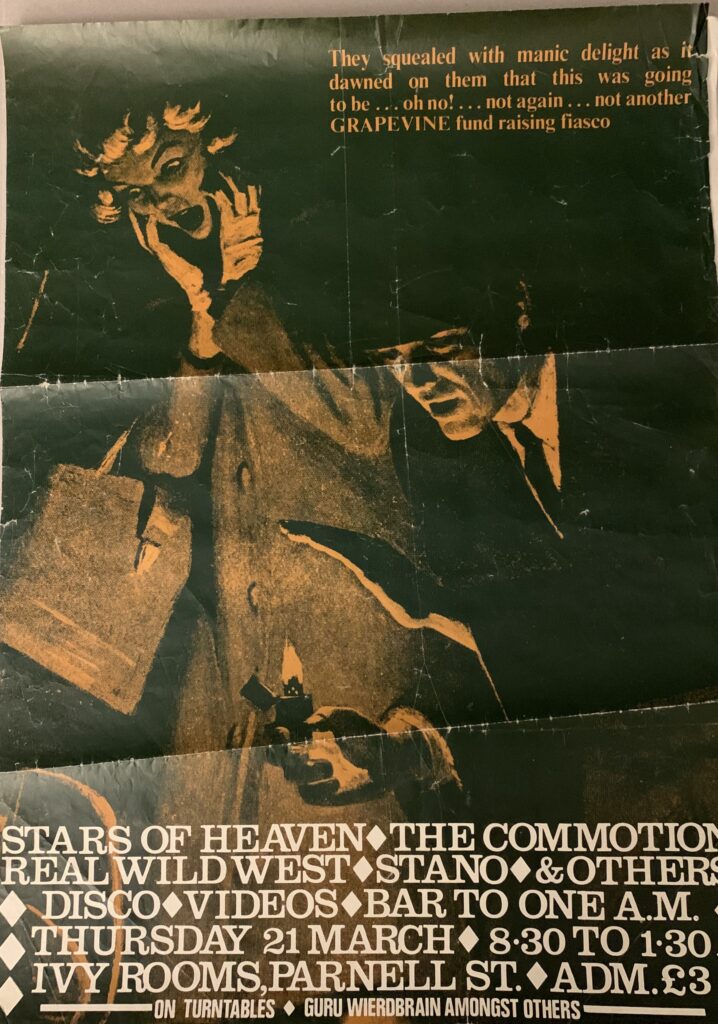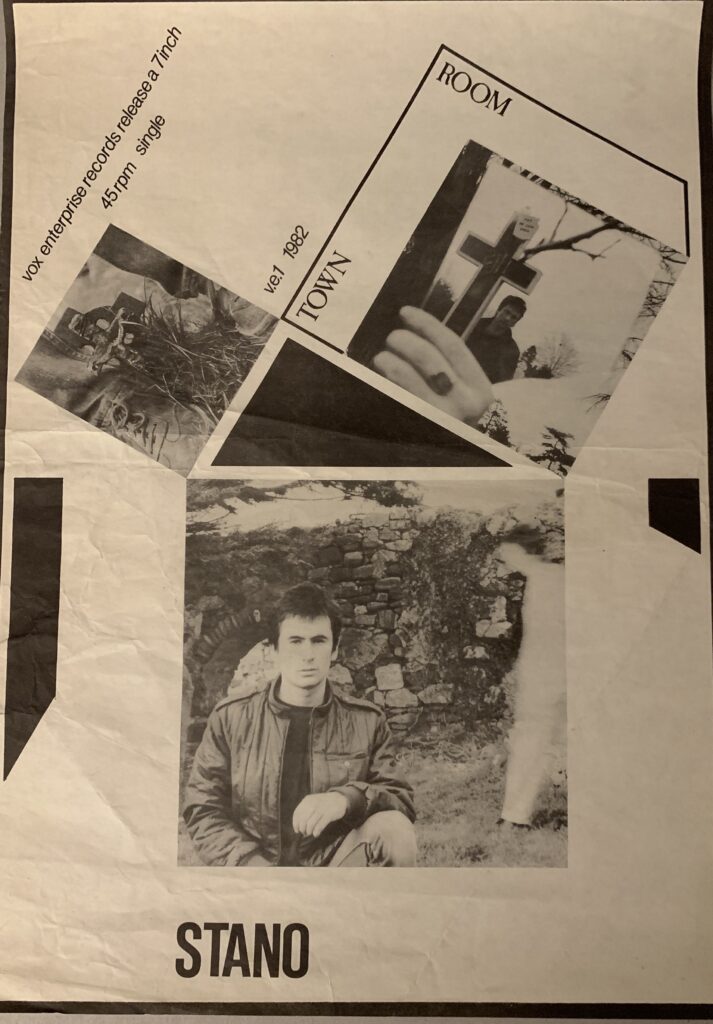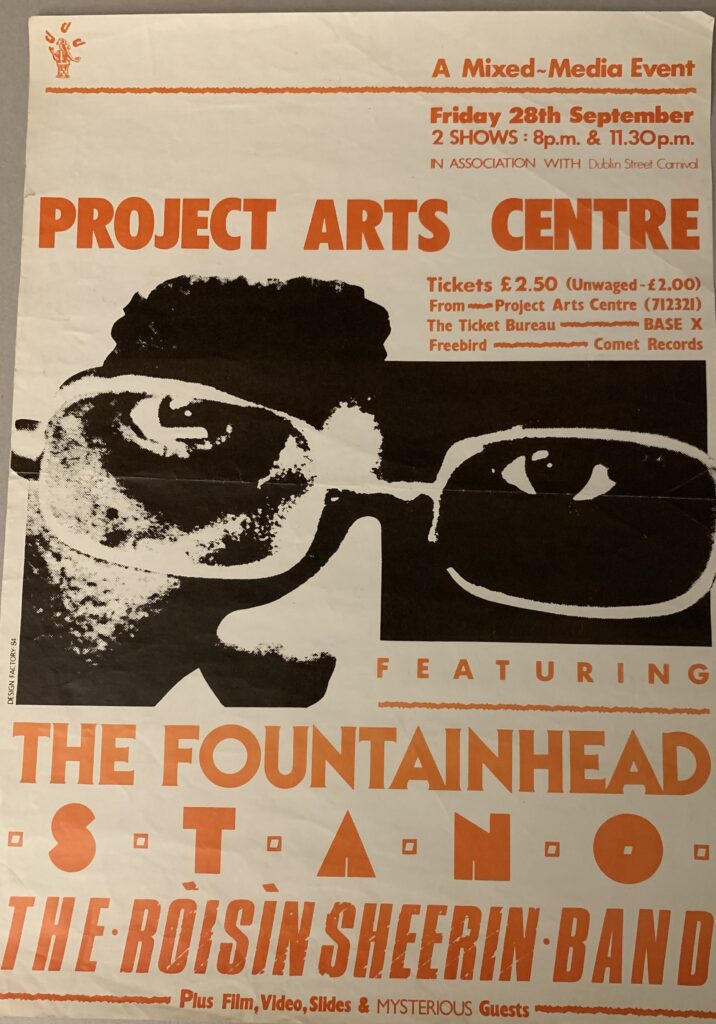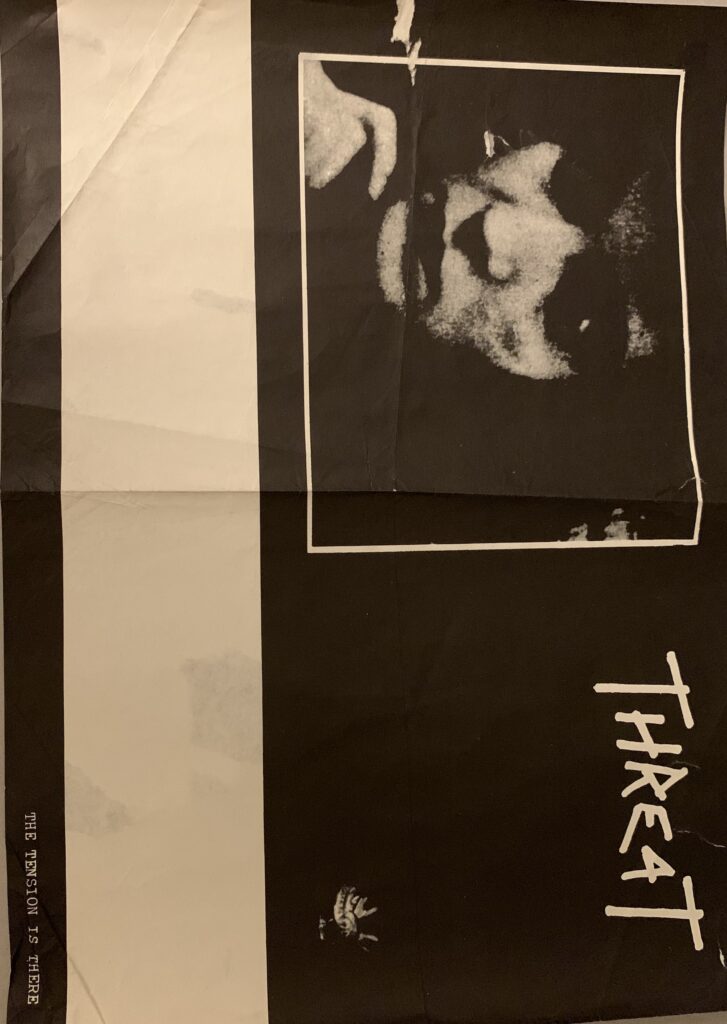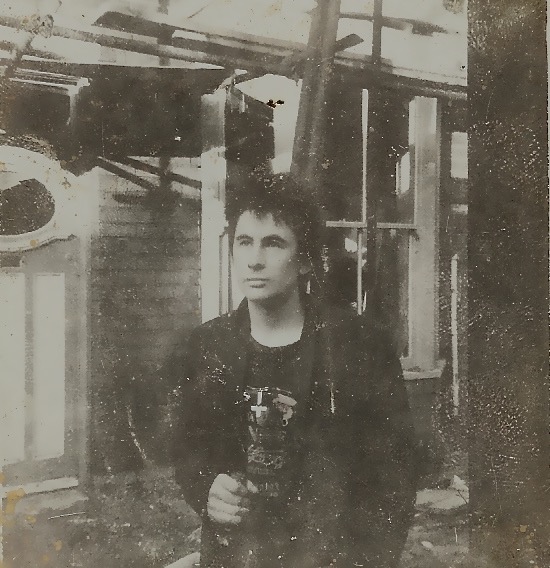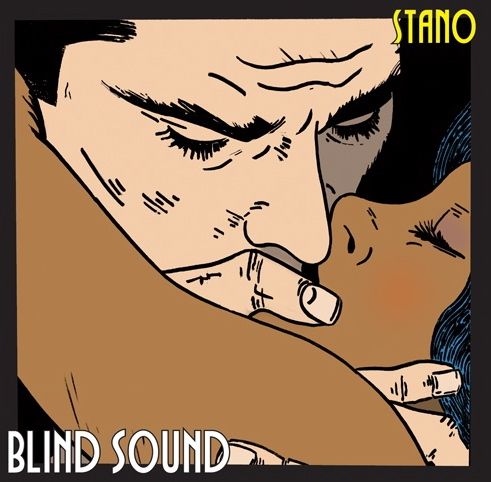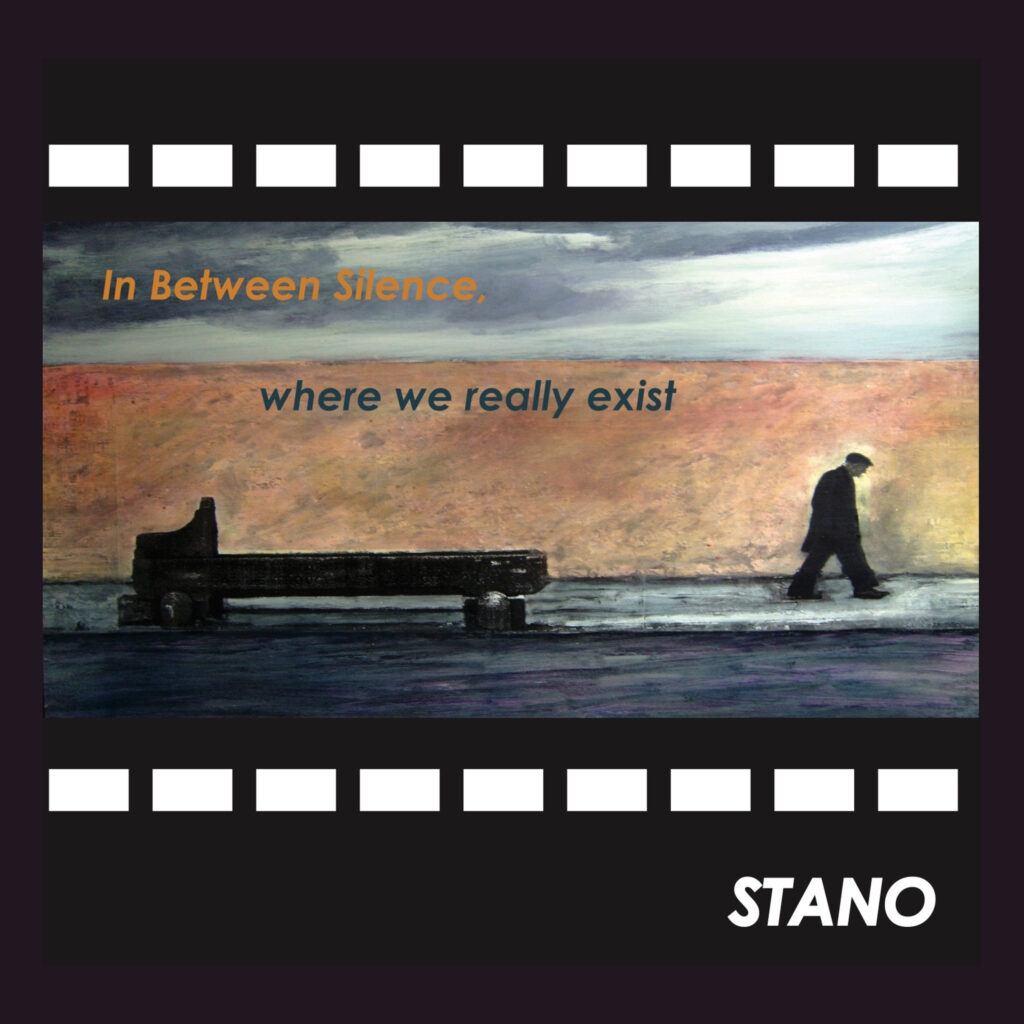News & REVIEWS
Reviews
Nialler9 2018
“Listening in retrospect, it’s phenomenal to hear just how far ahead of the curve STANO
was compared to what his Irish contemporaries were producing at the time.”
https://nialler9.com/premiere-STANOs-white-field-in-isis-was-so-ahead-of-the-curve-in-
1983-ireland/
Anthology
Stano is a name that runs through the eighties and nineties of Irish music, synonymous with sonic experimentalism and an eclectic output.
As interested in new forms as he is a versatile producer, Stano can turn his hand to punk, industrial, electronic, rock and in later years, drum and bass and beyond.
A new Anthology series on All City’s AllChival label is released this Friday (to coincide with the second Record Store Day drop of 2020) that spans five albums between 1982 to 1994’s Wreckage LP, the album, releasing on double vinyl and digital and with extensive liner notes, shines a light Stano’s early discography in a way that draws threads with all that came after it, and before it.
It is a project that started with the re-release of his debut 1983 album Content to Write in I Dine Weathercraft, on AllChival last year. There’s a bewildering array of music and genre strains across the 18 tracks of Anthology.
You can hear the future strains of Girl Band on the Gary Numan-esque post-punk howls of ‘Emma Wild’ and the variation here includes the Kraftwerkian ‘Room’, the meandering synth arpeggios of ‘The Majestics Of Majesty’, the square coldwave of ‘Kissing Trees’, the ’80s Bowie style of ’80s Canary Car’, the shoegazey tones of ‘Brook’ and industrial big beat on ‘Bleeding Horse’. I love the electro marimba clash of ‘Chaplin’, which is like Yellow Magic Orchestra dialoguing with minimal wave.
Those references are useful but really, Stano was his own artist, an avant-garde innovator capable of turning his hand to whatever sound muse he was following internally.
Certainly, for younger listeners, who often dismiss the output of those who came before, Stano’s Anthology, like AllChival’s brilliant Quare Grooves compilation or Michael O’Shea reissue, recasts the past of Irish music in a significantly more eclectic light than is usually discussed, and in the process, highlights Stano as one of Ireland’s most experimental and versatile outsider artists. Nialler9
IMRO / Stano – Anthology
Irish artist Stano has been a recording artist and composer since the early ’80s. With 9 albums (released on Berlin label ‘Dossier’, Independent labels ‘Hue’ and ‘Loscann’ and the debut album for U2’s Mother Records), numerous singles and film soundtracks to his credit. He is regarded as a true innovator, with an intense understanding of sonic structure.
Stano has always been known for pushing boundaries and being ahead of his time. The re-release by Dublin’s All City Records in October 2018 of his debut album ‘Content To Write In I Dine Weathercraft’ (1983) really brought this to the fore, with UK publications Quietus Magazine, Boomkat, and DJ Magazine, shining a light on Stano’s influence citing the current crop of new Irish bands Fontaines DC, Girl Band, Murder Capital.
Following on from All City’s 2018 repress of Stano’s debut album, the store’s off-shoot label, AllChival, is delighted to present an Anthology of Stano’s productions spanning the start of his solo career in 1982, to his 1994 ‘Wreckage’ LP, out now ahead of Record Store Day, September 26th. Featuring 18 tracks from the five LPs he released in that time span on double vinyl with extensive liner notes, it is a comprehensive look at one of Ireland’s more enigmatic musical characters.
Stano says: “When I’m recording an album I’m totally focused on it and when it’s finished I don’t really think about it anymore, my focus turns to the next one.
The anthology has encouraged me to look back at not just the body of work, 15 albums since 1982 but to those early days of being a young punk in Dublin, the freedom and excitement of the time. Searching out the old reviews and the posters of all the gigs here and in London and remembering the great musicians and performance artists I’ve shared a stage with. Truly exciting times.
It’s been an amazing experience and a surprise to me that we could only fit 1982 – 94 on the double vinyl. I suppose I’ve underestimated the quantity of work I’ve produced over the years. Now I’m really looking forward to Volume 2 which will include tracks from number 16 which is being cooked in the studio at the moment.”
This anthology shows the depth and breadth of Stano’s musical history. He never repeats himself from album to album or song to song. Always an outsider, his significance and influence are finally getting the recognition he so justly deserves. Because his music was never part of any scene, it remains timeless.
Stano – ‘Anthology’ is released on Allchival for Record Store Day, September 26th, 2020, via AllChival – a dedicated reissue label of Irish sounds from the past, which has previously released compilations of Irish jazz, disco & rock as well as LP’s from Roger Doyle’s Operating Theatre, Michael O’Shea & Cork’s Five Go Down To The Sea.
Anthology – Irish Times review
Stano: Anthology review – a true blue maverick who never got his due
Irish music in the 1980s wasn’t all U2, as this collection of improvised electronica proves
Project “It’s Just Like Meeting Picasso”
DEC 17, 2018
THE QUIETUS REVIEW – CONTENT TO WRITE IN I DINE WEATHERCRAFT
‘Utterly radical, subversive and alien’: the untold story of Irish post-punk Read the article on The Independent
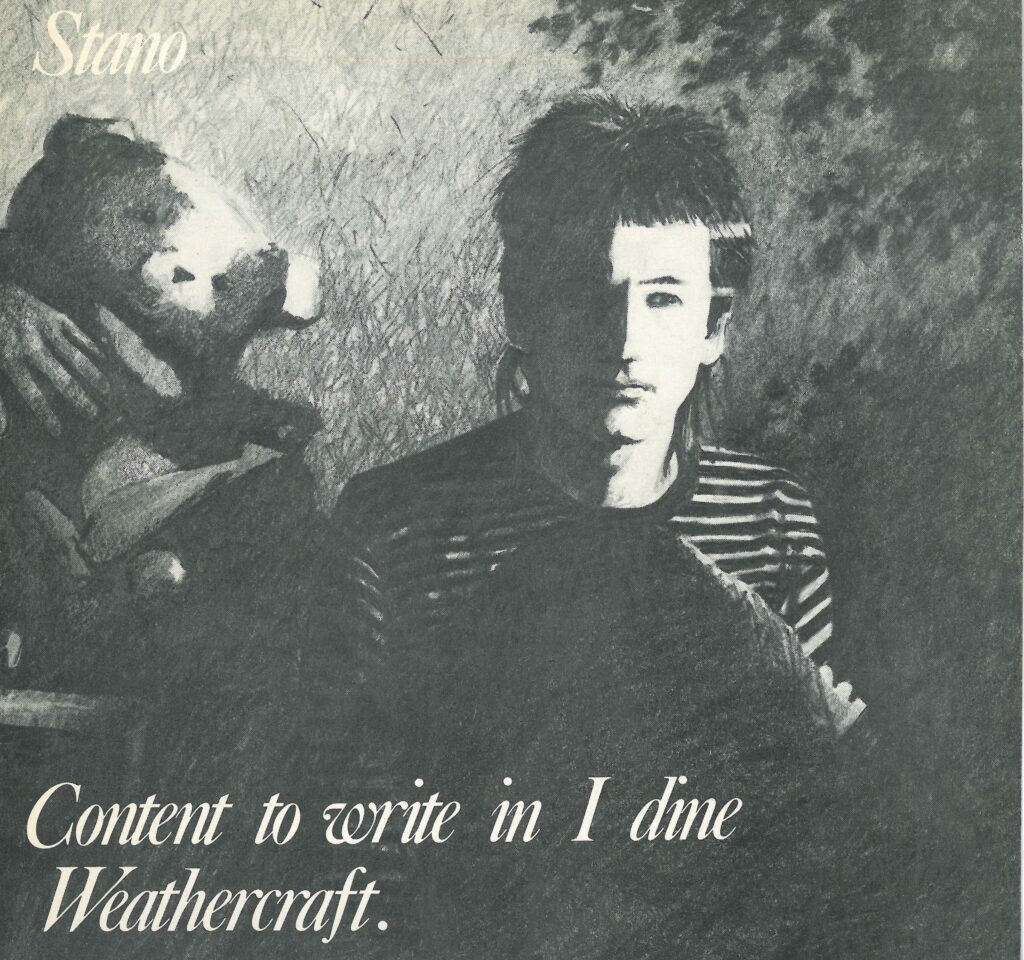
Original Article: thequietus.com
Exuberant, outlandish and wry archival release from the Irish post punk experimental underground
Dublin’s All City has been doing a fine job of late in recovering and reissuing widely forgotten treasures from the Irish undergrowth, reinstating their significance to the country’s musical canon in the process. Last year, the label released Quare Groove Vol. 1, an eight-track collection of rare groove, post-punk, funk and disco from the 70s and 80s. The release celebrated a vital, versatile and brilliantly weird underbelly; one that shirked the outward facing ambitions of more “marketable” acts while leaning further into the studio experimentation and oddity that would go on to become the touchstone of Ireland’s musical landscape for decades to come.
One of the compilation’s standout moments was Stano’s ‘White Fields (In Isis)’. Dropped between the galactic videogame pop of Those Nervous Animals’ ‘Hyperspace!’ and Barry Warner’s yelping,My Life In The Bush Of Ghosts -like ‘Losing Control’, Stano’s no wave cut swerved and bounced with a boyish arrogance, his open-gobbed vocals seeming eager to swallow the bass and drum patterns that trounced around them.
The track wielded the sort of brash confidence and exuberance that only someone with no restrictive formal training could produce and was, as it happened, just one of 12 outlandish, wry and lovingly off-kilter cuts that the self-professed “non-musician” included in his 1983 debut LP, Content To Write In I Dine Weathercraft.
Now, continuing their archival venture, the folks at All City have reissued that seminal album of Irish experimentalism. In doing so, they have shone a light on an artist whose significance runs deep and who, in many ways, prefaced the gnarled, accented and inflected authenticity that has since resurfaced in Irish artists like Kojaque, Girl Band, Fontaines D.C, Handsome Eric and Robocobra Quartet.
Stano’s approach to music at the time of recording was like that of a child playing Blind Man’s Bluff on Dublin streets to find musicians like sitarist Michael O’Shea or fumbling within the local scene to tag multi-instrumentalist Vinnie Murphy, audio engineer Terry Cromer, Jerome Rimson, Chant! Chant! Chant! Guitarist Robbie Wogan, pianist Dave Murphy and Daniel Figgis on keys. The method, he has explained, was to ask these musicians, from varying stylistic backgrounds, to simply play while being recorded; together or alone, with delay units or without. He would then pick from those recordings the bits he liked and proceed to chop and edit them into form. Same went for the drum programming, which he “learned” by sheer intuition, creating patterns that were unorthodox and built on instinct rather than conventional groove.
This crude and joyously chaotic process ends up feeling like something in between early hip-hop production and abstract collage. But through it, Stano made an album that touched on something both beautiful and raucous, its lo-fi grit being accentuated and elevated by his distinctly North Dublin spoken drawl. Everything about it lovingly shouts “Dublin” – from its mumbled poeticism and unabashed dog-eared musicality to its grey, cold, magnificent atmosphere.
‘A Dead Rose’ introduces the album with clicking rhythm and absorbing layers of sitar and guitar, which breathe life into Stano’s brittle poetry. The gradual, barely-there pitch alterations to his voice give the feeling of a meandering stream of consciousness, directed at some imagined figure before him or within.
From there, ‘Blue Glide’ and ‘Emma Wild’ cast a droopy eye to Stano’s equally disobedient contemporary across the pond: one Mark E. Smith, who, in the same year as Content’s original release on Scoff Records, released The Fall’s Perverted By Language. Distorted, turgid guitars fall on disjointed rhythms while Stano’s abstract vocals flail on top with an unlikely charm. It’s in these moments that it becomes hard to not to draw comparisons between this once-deemed forgotten voice and that of Girl Band’s Dara Kiely, whose sardonic and desperate vocals on 2015’s Holding Hands With Jamie propelled the similarly off-kilter noise rock band to lofty heights in before they were forced to cancel all forthcoming shows in 2017 due to health concerns for the singer.
‘Melting Grey’, ‘Out Of The Dark, Into The Dawn’ and ‘Seance Of A Kondalike’, by contrast, show a more reserved version of the producer, whose studio manipulations find guest vocalists, emotive piano layers, haunting keys and lethargic drum patterns crafting a uniquely absorbing mid-section to an album the likes of which were scarce in the era.
Content To Write In I Dine Weathercraft ends with ‘Young Colatic Child’, a heartrending ballad that feels as staggering now as it should have been in 1983. It is heartening to know that Stano is, to this day, a core fixture Ireland’s arts community and has, since this debut, released 12 albums on numerous labels. One can only hope that, with the help of All City’s continued work, Stano and the other forgotten progenitors of Ireland’s rich, diverse and distinct music scene will soon be ranked among the country’s most influential.
OCT 27, 2018
SCATALOGIK REVIEW – CONTENT TO WRITE IN I DINE WEATHERCRAFT
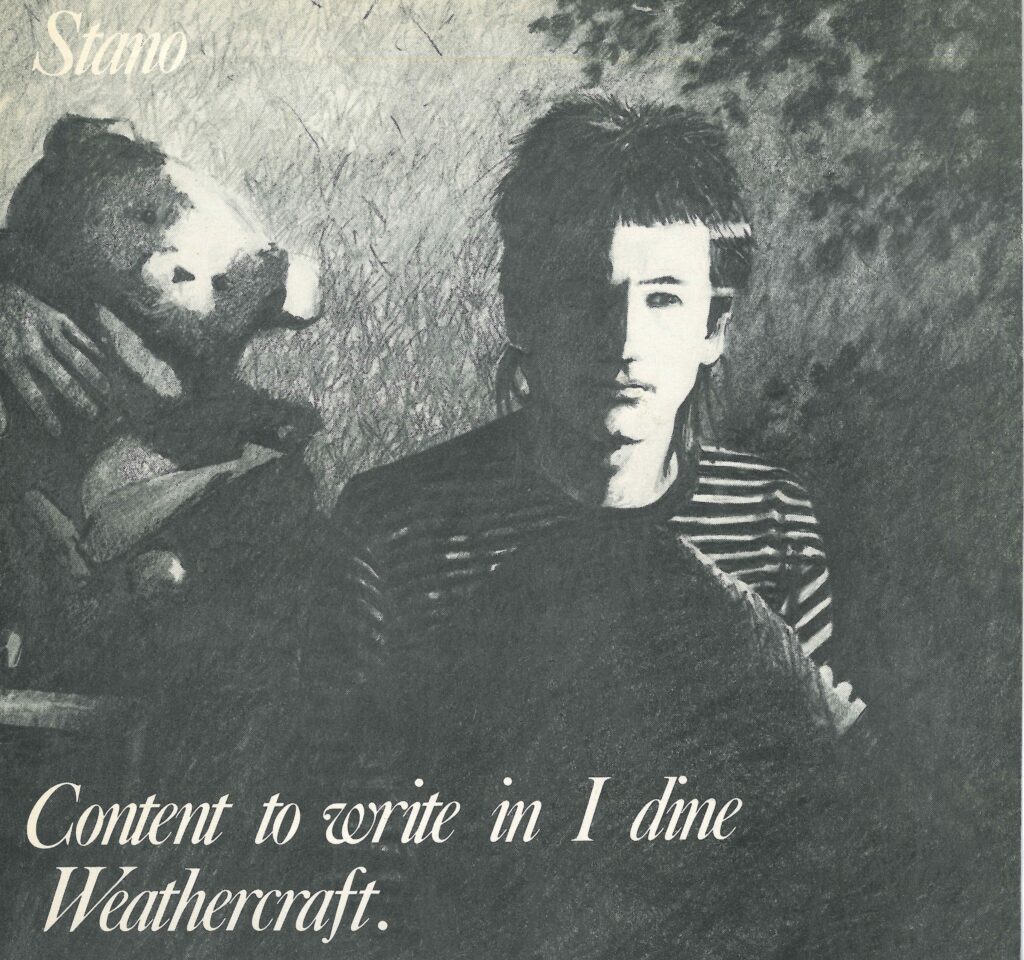
Original Article: Scatalogik Review
To get an idea how much of an anomaly Stano’s 1983 debut album Content to Write in I Dine Weathercraft really was, simply compare it to pretty much any other Irish entity lurking around at the time of its release – Tokyo Olympics, for example, (spawned from the very capable DC Nein) traded their dark post-punk edge for a kind of bland new romantic funk dirge over a handful of singles – Elsewhere, the harmlessly flaccid Chinos-and-Fairlight new wave of Minor Detail’s Canvas Of Life (released within a month of Contentto Write in I Dine Weathercraft ) was a good example of a polar opposite… everything obediently crafted Irish pop needed for minor rotation on the red hot sound of Sunshine 101 – And no matter how hard you looked, there wasn’t much of an experimental microcosm to be found in Scoff stable-mates the Rhythm Kings or Mama’s Boys…
Nearest in sonic genealogy to Stano were 2 disparate entities – The Virgin Prunes, who by 1983 were at a cumulative watershed after 2 years of highly potent releases – And Roger Doyle, who in 1981 released one of the most fascinatingly leftfield Irish records ever, Rapid Eye Movements, under the name Operating Theatre, before using the same guise to create some slightly unfortunate pop singles.
As with many independent records of the era, Content to Write in I Dine Weathercraft has become somewhat of a rarity. In years of trawling around Dublin record shops (when there were many of them), I only ever saw the original Scoff pressing of this once, and in a fairly unloved condition. Probably more common was the debut 7” ROOM/TOWN, released in 1982 by Vox magazine. And if that strange and wonderfully weird record wasn’t enough to confuse anyone who knew Stano from punk band the Threat, then a whole album’s worth of music in unmapped territory probably sent those with tribal affiliations and parochial tastes running for cover.
Stano’s approach to creating the music for Content to Write in I Dine Weathercraft had more in common with the operations of a dub producer than a solo artist or band member – each collaborator drawn into the mix for a specific skillset to experiment with – but would be inaccurate to explain this away as being the work of an glorified engineer, conductor or simply as a curator… perhaps that role was best left undefined or vague, as the very individual talents of Roger Doyle, Donald Teskey, Michael O’Shea, Vinnie Murphy and Jerome Rimson (probably best known around these parts for being a member of Phil Lynott’s solo band) were syphoned to best effect.
Initially released by Scoff records in 1983 (with English and Greek pressings following in 1985), it is somewhat surprising, but not at all unwelcome, that this reissue would be handled by All City Records’ reissue label AllChival. I always thought of them as being firmly in the dance/electro/hip-hop field, and an obscurity of this nature is a risk for anyone to invest their faith in.
As for the actual content, and how it sounds 35 years after the matter…
…The album opens with the skewed post-punk funk of WHITE FIELD (IN ISIS), interplaying Jerome Rimson’s fluid and dominating bass with a vocal mantra and unashamedly programmed percussion. Present throughout the album, the era-specific sound palate of synthetic rhythm endures simply because of the unorthodox and DIY nature of its implementation. A more skillful command of the drum machine would certainly have dated the album harshly. SEANCE OF A KONDALIKE is awash with string reverberations, twisted screams and features the homemade instruments of Michael O’Shea (a kind of Irish Laraaji). This is distinctive in its gothic folksy din, bearing the hallmark DNA of Virgin Prunes creepiness. BLUE GLIDE’s spoken vocals and pangs of brash guitar come across as the capturing of a moment of loose and improvised experimentation. Featuring Roger Doyle, OUT OF THE DARK, INTO THE DAWN is the first of several piano based tracks on the album. It locks in with a sparse and understated percussion, building on an initial mood and momentarily threatening to drag the tone askew before reconciling the elements with a brief vocal section as the track comes to a close. YOUNG COLATIC CHILD works with a similar melancholy and instrumentation, but here Stano delivers a cascade of lyrics with all the nasal snarl of an UNDER THE FLAG era Frank Tovey. FOX initially pretends to be a playful closer to side one, but its nightmare undercurrent of creepy rusted fairgrounds and sleep paralysis keep it lingering in a grey area between reality and mind trickery.
MELTING GREY opens side two with backward washes, effects and heavy clangs of percussion… it’s the most “industrial” sounding of anything on the record. WHALE makes for a brief and sedate interlude of acoustic guitar and spoken vocals before EMMA WILD kicks in with its glorious no-wave twisting funk bass, synth and ranting vocals. This is one of the undoubted jewels of the album. A DEAD ROSE brings with it a vague eastern influence with chiming Sitar and percussion programmed to mimic a hand drum pattern. VIXEN is an echo-y cocktail of vaudeville piano layers, revisiting the themes of FOX from side 1, but maybe aiming for something a little more whimsical and luring before the nightmare begins. Finally, we arrive at the first single, ROOM. The unlikely mix of bleak grand piano, natural room reverb and drum machine has always made this a dejected affair. Probably the most successful track at evoking the era of it’s conception, this is a ROOM of bad peeling 70’s wallpaper, rotting windowsills, black damp and the last blue flutter from a Superser as the cylinder runs out of gas.
However divisive it may have sounded 35 years ago, this reissue presents Content to Write in I Dine Weathercraft as a record of deep thought, DIY process and creative bravery. It successfully combines musical sophistication and radical experimentation with clunky technology and sometimes-impenetrable dream logic poetry. Although there were similarly minded records in post-punk England, this is an Irish stand-alone. And as Stano’s music slowly ebbed towards something more polished over the next 3 albums, this record retained its distinction of being the strange and creepy first-born of the discography. The only downside of the reissue is that space couldn’t be found to include Town, the flipside of the debut single.
A compelling listen, but not a record ever likely to be spun on an ‘83 school reunion dancefloor alongside Culture Club and Wham!…
OCT 18, 2018
BOOMKAT REVIEW – CONTENT TO WRITE IN I DINE WEATHERCRAFT
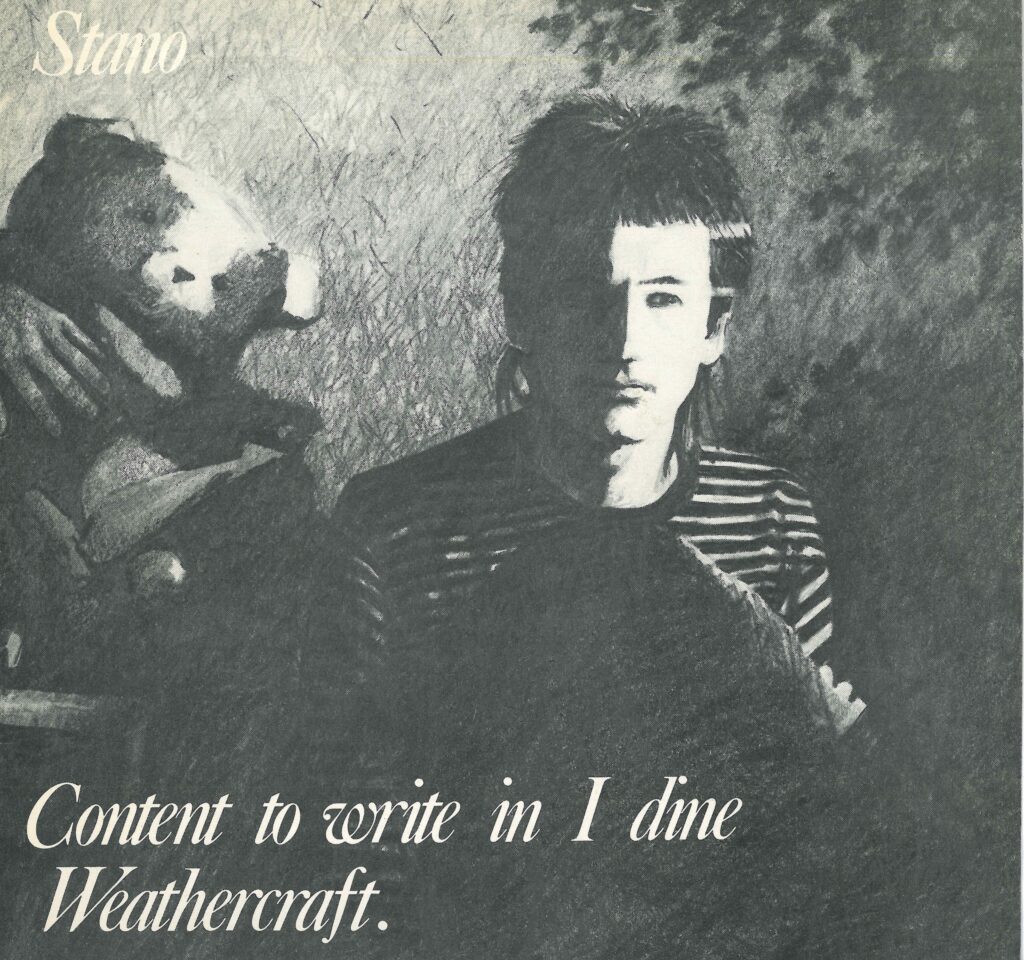
Original Article Boomkat.com
One of the year’s most crucial wave reissues, Stano’s debut LP ‘Content to write in I dine Weathercraft’ is a seminal and sought-after Irish post-punk album starring two rare appearances by the near-mythical Michael O’Shea. Nothing less than an essential recommendation to anyone familiar with the Michael O’Shea LP, Finders Keeper’s ‘Strange Passion’ compilation, or early Dome experiments!
We can barely contain our buzz over this reissue. From its wild DIY drum machine programming to the appearance of O’Shea’s cymbeline-like home-built instrument and the cut ’n splice, layered song arrangements, ‘Content to write in I dine Weathercraft’ is one of those blue moon reissues that, in hindsight, seem to blow away so much other, better known material from the era whence it came.
As spotted with ‘Town’, a highlight of Finders Keepers’ great Cache Cache compilation, ‘Strange Passion’, Stano’s mix of hands-on drum machine rhythms and bittersweet songcraft remain among the strongest examples from Dublin’s punk/post-punk scene of the early ‘80s. And judging from the 2nd hand asking prices of ‘Content to write in I dine Weathercraft’ in 2018, quite a few other listeners are patently aware of his prowess, too.
A former member of The Threat (also found on ‘Strange Passion’), John Denver Stanley or Stano recorded his first album in Dublin’s Alto studio, in the basement of late C.18th Irish Nationalist leader Robert Emmet’s house, where he made sublime use of the studio’s natural reverbs, inviting around pals and peers to work in a musique concrete-like method of playing, processing and editing to achieve the wickedly unpredictable, flowing chicanery of his first album.
The two appearances of Michael O’Shea and his Mo Chara (a self-built, 17-string, zither or cymbeline-like instrument with pick-ups) are noteworthy not just for their haunting beauty, but also their rarity, amounting to the near-mythical busker’s only known recordings outside an eponymous classic for Bruce Gilbert and Graham Lewis’ Dome Records. Whether meshed with Stano’s drum machine and echoplex FX in ‘Seance of a Kondalike’ or layered with his Sitar and Stano’s tabla-esque tweaks in ‘A Dead Rose’, the effect leaves us a shivering mess, to be honest and still scratching our heads why there’s no recent, significant reissue of O’Shea’s own work.
The rest of the LP is no less brilliant in it’s own way, roundly speaking to the diversity Stano, a self-described “non-musician”, and his intuitive way with sound. From the almost lusting funk of ‘White Field (In Isis)’, to the wild-pitching drum machine of ‘Blue Glide’, thru the icy elegance of the grand piano in ‘Out of the Dark, Into the Dawn’, to the sheer concrete sound design of ‘Melting Grey’ and again with that deadly machine swagger on ‘Emma Wild’ and ‘Room’, we’re left in no doubt this LP is a true, overlooked classic of its time.
Essential purchase.
OCT 14, 2018
STANO — THE MAGPIE
an oral history by Paul McDermott
Introduction
Stano’s 1983 debut album Content to Write in I Dine Weathercraft is reissued this month by AllChival (All City Records’ reissue label). The original album has been exchanging hands for lots of money in recent years so this is a very timely release. Stano’s avant-garde electronic record was years ahead of its time and quite rightly deserves its place in the pantheon of seminal Irish post-punk releases. Stano started out as a member of Dublin’s legendary The Threat before releasing his debut single in 1982. Punk was the great enabler: Stano couldn’t play an instrument but he did write poetry, he also had two tape recorders. He would bounce field recordings from one tape machine to another and add spoken word performances. He recorded band rehearsals and cut up the jams he liked: by his own admission he was a magpie, soaking up influences and regurgitating them. Never one to sit still, he has since released over a dozen albums of startlingly, uncompromising original music. Over the last few years I’ve had the pleasure of chatting to Stano on a number of occasions. He joined me up in Dublin City FM for a really long chat one night and more recently he contributed to a documentary about Michael O’Shea that I’m producing. Over the Summer we spent a great afternoon revisiting the home of Alto Studios in Robert Emmet House in Milltown. Below is some of what transpired over the course of those meetings.
Read the rest of the review on medium
DJ Mag review Premier: Stano ’emma wild’
DJ Mag Review PREMIERE: STANO ‘EMMA WILD’
Ever groundbreaking Dublin label All City are set to reissue the 1983 debut solo album from Irish post-punk pioneer Stano, ‘Content To Write In I Dine Weathercraft’.
Less a composer, more a puppet master or mad scientist, Stano’s lack of strict instrumental knowledge meant the music he made, along with his assorted collaborators, always oozed with an essential experimental, off-kilter edge. Throughout the album what’s most apparent is a sheer fascination with sounds, unconventional and grating as they can be. Having spent formative years in Dublin punk band The Threat, that DIY, improvised ethos fully defined Stano’s work at the time of this album’s recording, with fusions of everyday sound, poetry and music.
That ethos continues to define Stano today, who, three decades later, continues to operate as an active member of Ireland’s underground arts and music scene.
‘Content To Write In I Dine Weathercraft’ features a cast of musicians active in Ireland at the time including Michael O’Shea, Roger Doyle, Donald Teskey, Vinnie Murphy and Detroit born Jerome Rimson.
‘Emma Wild’ – which you can hear below – is one of the album’s most immediate, vocally unhinged cuts. In it, you can hear the ravaged dirt of bands like The Fall, who released ‘Hex Enduction Hour’ the year before. Most interestingly, you can hear a marvellously deranged vocal style that would go on to be captured by one of the most important Irish bands of the past decade, Girl Band.
This reissue follows All City’s revered ‘Quare Groove Vol.1’ from last year which saw the label remastering and releasing a collection of underground funk, disco, post-punk from Ireland from the ‘70s and ‘80s. The label also recently released the latest album from John Daly last month, from which we premiered the track ‘Milestones’.
‘Content To Write In I Dine Weathercraft’ is out next Monday 15th October. Pre-order it here.
SEP 26, 2016
DAN HEGARTY ‘BURIED TREASURE VOLUME 2
Volume 2 of Dan Hegarty’s ‘Buried Treasure’ has just hit the shelves, check out his piece on ‘Blind Sound’.


SEP 08, 2015
Decoder meeting house square
A 60 MINUTE LIVE MUSIC, FILM AND 3D PROJECTION/MAPPING EVENT.
Following the success of last years ‘UNSPOKEN’ event in Meeting House Square, Temple Bar, Stano brings ‘DECODER’ to the same venue, on Friday, September 5th.
Under the award winning, giant umbrellas in MHS, which create an amazing indoor / outdoor space in the City Centre, Stano presents DECODER, a one hour, Music, Film and 3D Projection experience.
Featuring, on Guitar, Sean Coleman, Jen Rabs and Niall O’Shea and on Drums, Simon Freedman, Johnny Boyle and Daz Oglesby.
DECODER is presented in association with Sony , TBCT, DCC and Screentime Shinawil.
OCT 18, 2014
UNSPOKEN – MEETING HOUSE SQUARE
THIS EVENT WAS INSPIRED BY THE MUSIC FROM STANO’S ‘UNKNOWN DISTANCE’ ALBUM.
‘Unknown Distance’ by Irish post punk legend Stano features some of his finest work to date. Songs are by turns dynamic and reflective, propelled by stunning musicianship and perfectly textured arrangements. Yet unusually for such a cerebral work, ‘Unknown Distance’ still manages to retain a sense of playfulness; heart and head in harmony.
As ever with Stano, each song is the result of intensive collaboration. Regular players such as artist/guitarist Donald Teskey, cellist Kevin Murphy and pianist Conor Linehan infuse the arrangements with their own unique playing style. Yet the dynamics, texture and tone are unmistakably Stano. A renowned visual artist, Stano’s method of production echoes that of his paintings, with songs assembled from a palette of sounds, like paint applied to a canvas.
Unknown Distance could be the soundtrack for an imaginary existential thriller. A noirish trip through dim neon lit side streets, bristling with electric energy, peopled with lost souls, where the first cut is always the deepest. This is Stano bringing us on a trip through the contours of his mind – destination undetermined, distance unknown.
Tracks like ‘Marley Stipe‘, ‘Families That Walk Around Town‘ and ‘Unspoken‘ demonstrate that Stano’s unique gifts continue to develop and that 30 years after his debut he remains one of our most compelling and innovative artists.
OCT 11, 2012
WRECKAGE REVIEWS
ALTERNATIVE+PRESS of October ’94
By Dave Segal
The Western world is lousy with bands meshing industrial guitar damage with dance beats. Maybe five percent are worth the aluminium on which they’re pressed. In this genre, lreland has produced Therapy? but by their third album they’ve drastically blanded out and now seem poised to become a less pompous U2. Which sort of leaves the field open for fellow countryman Stano who’s been recording since 1982 unbeknownst to me and millions of others, to fill the void.
Satisfying dance-floor requirements as well as laying down some wicked noiz-glam guitar lines, Stano’s fifth album should appeal to those who like to listen to music in both vertical and horizontal positions. Imagine Chrome colliding with Nine Inch Nails in a disco – that’s Wreckage.
My Bloody Valentine’s brilliant drummer Colm O’Ciosoig helps on three tracks producing, composing and playing sampler keyboards. The best of these ‘BIeeding Horse ‘ is the coolest warped dance/experimental rock hybrid since MBV’s ‘Soon.’ Distance’ an eerie slo-mo dance track, also shows Colm’s leftfield sensibilities. Other songs bearing Valentinian guitars are Fire Caught in Rain’ and ‘Brook’.
Mostly though Stano tries to do many interesting things with the noise-danceability equation and succeeds more often than not.
DUBLIN EVENT GUIDE
By Michael Beirne
WRECKAGE is Stano’s fifth album, and while expectations were let down with his last one, this album is an amazing show of force. Co-produced by Stano and Colm
O’Ciosoig of My Bloody Valentine, Wreckage is the epitome of diversity. From the industrial NlN/Young Gods tinted ‘Drain Puppet’ to the three part dance epic ‘Whatever Way You Are’ ‘Wreckage’ is like taking a high speed train along the musical railroad. From rock to ballads to straight forward house and dance, this is an album that will entice, excite and entertain at every opportunity. The house beat and sensibilities of ‘Bleeding Horse’ rest rather easily alongside the beautiful sweep of ‘Land Slips the Mind’ and the gravelly ‘Fire Caught In Rain.’ A real kick in the teeth for the rock purists and a welcome addition to the record collection of people who genuinely love music.
IN DUBLIN of March 2-15 ’94
By Frank O’Neill
Stano is one of lrish music’s true originals. Wreckage is his umpteenth album and It’s also his best, an intriguing distillation of all the studio tricks and eccentric methodology that he’s been honing to a fine art over more than a decade of recording Stano is a master of studio serendipity. He juggles with sounds and musicians, turning them upside down and inside out until he hits on something that works. ‘Wreckage’ is a rich, and mostly satisfying, assortment of tape loops, white noise, aural landscapes and good old fashioned guitar driven pop songs. ‘Drain Puppet’ hits a spot right in the pit of your stomach – It’s wonderful in a queasy sort of way, an acid trip on the Big Dipper. ‘Pearls’ is The Ramones trying to do 100 mph in second gear. ‘Bleeding Horse’ suggests that Stano has had some very disturbing experiences in the Camden Street pub of the title. Over fourteen tracks ‘Wreckage’ explores a coral reef of textures and mood, often stunningly juxtaposed Weird and mostly wonderful
JUL 2, 2012
VILLAGE MAGAZINE REVIEW
The revolutionary Threats’ synths-player was always challenging in the creatively-loaded, dangerous early 1980s
by Michael Mary Murphy
Brief Background
Stano’s first musical expressions exploded in the embryonic mayhem of Dublin’s punk movement. No other musician from that era has produced the range, quality and quantity of albums that he has. His output embodies the scorching ethic of early Dublin punk: no compromise, no acceptance of commercial considerations. The solo nature of his work hasn’t been to the exclusion of collaborations. In a way, his ability to include contributions from members of Thin Lizzy, My Bloody Valentine, Donal Lunny as well as visual artists, demonstrates the quintessential interconnectedness of the Irish art world.
Context
Sociologists Barbara Bradby and Brian Torode laid down the marker for popular music studies in Ireland. They correctly asserted that the meaningful study of Irish music acts demanded scrutiny of their particular social and industrial surroundings. Their studies of U2 challenged the standard and lazy myths that Irish bands emerged from ‘virgin births’. This myth perpetuated the false conclusion that great acts find their way to success. Such lazy logichas contributed to a lack of comprehension about how crucial elements of Irish society actually function.
The material conditions of any industry or craft process shape the output.
Late RTE radio personality Gerry Ryan’s autobiography contains frequent salivating admiration for men he describes as “merchant princes”. This élite of property developers and politicians, he wrote, should be better compensated and respected by the people of Ireland.
Higher rewards, he felt, would eliminate corruption. He described his youth spend in their midst:
“The Haugheys had a mansion, a swimming-pool, rolling gardens, a hunting area and a lake. A whole gang of us well-heeled upper-middle-class kids used to hang around together in surroundings that exuded privilege and wealth”.
Ryan’s book describes his brief flirtation with punk in Dublin. He enjoyed this brief dalliance while a student at Trinity College. His bands Anal Crack and the Vomettes (one can only imagine the hilarity – what a laugh for his fellow law students) and the Wires performed in Trinity and another citadel of punk, the Dalkey Island Hotel.
While to Gerry Ryan and his mates Anal Crack punk was a jolly jape, to other young Irish people it was serious business. It is impossible to contemplate U2’s success without referring to the vehement, violent and vibrant scene that opened doors through which they gladly stepped. Stano epitomises that hardscrabble incremental artistic industriousness.
Stano’s life demonstrates the intriguing connections in the Irish music industry. The punk wave saw a tsunami of acts performing original music. Many had a serious siege mentality, a feeling of isolation. There was a sense that everything that had happened previously was wrong. Like any collective artistic endeavour alliances were formed and broken. One of the heaviest bands of the era had the perfect punk name – The Threat. Stano was on synths. The first bands who plunged into the idea of punk were generally musicians who had struggled in some previous pre-punk incarnation. Pub rockers, r ‘n’ b aces, glam preeners and underground dwellers all heeded the call to the new movement.
It attracted rebels and poseurs, people who wanted to dress up and spit because they read about it in the newspapers. It also attracted the curious and the genuinely inspired.
The Threat accepted the new vision of punk. Their songs uncompromisingly accepted that to be punk meant to stand outside the mainstream. That was dangerous ground in the Dublin of 1978. Their singer, Maurice Foley, played traditional Irish music growing up and developed a passing interest in folk. Later it was the beat of the tambourine that called to him.
At the height of the band’s popularity Foley simply disappeared and joined the Hare Krishnas. While many musicians threatened to walk out on their bands Foley walked out on the Threat. And who did these heaviest punks get to produce their debut single? Planxty’s Donal Lunny. From its inception the punk movement in Ireland had a link with the traditional music sphere. Albeit the progressive side of trad in Ireland. Both waltzed on the wild side from necessity.
The Threats’ debut single was recorded and the band waited for Lunny to mix it. European commitments prevented the trad man from mixing the single immediately. In the simpler and unsophisticated times that were in, the Threat used to call up to Christy Moore’s house weekly to find out when Lunny might be back to complete the single. In true punk spirit they eventually gave up and did it themselves.
Foley’s defection to Krishna put an end to the Threat in 1981 but not before the two-sided slab/slap of vinyl documented some of the progressive elements of that punk scene.
The band’s Deirdre Creed was one of Ireland’s first female bass players. Stano’s early adoption of the synthesiser placed him alongside other pioneers like Steve Averill who grafted that futuristic instrument to the local new-wave scene. Only Averill kept pace musically and visually with Stano in those complex, creative and chaotic times. Their ingenuity, application and sustained bloody-mindedness deflected the Dublin music world from complacency. They were matched in the literary sense by Dave Clifford whose fantastic fanzine Vox chronicled the best of that scene. He helped the Threat with their artwork.
Clifford poured his artistic background and entrepreneurial instincts into the short-lived label ‘Vox Enterprise’. The debut release was Stano’s first solo single, ‘Room’. While none of Stano’s output is easy listening, some of his work is exceptionally challenging. And that is one of the reasons why he is the most significant solo artist to emerge from that early Dublin punk scene. His work forces the listener to engage. It offers a stark choice: be annoyed by this or understand it. ‘ Room’ is evocative, distinctly unpunky (which makes it punky).
This was music by and for the people who took John Lydon’s invitation to break the rules. To them it was a compulsion not an option.
The average career of Dublin bands of the era was one-single long. Most never succeeded in gathering the resources necessary to leave a legacy. The three Rs that constitute the bedrock of the music industry: rehearse; record; release, were beyond the means of most. Studios were primitive and expensive.
Rehearsal rooms were often not just unfit for purpose: they were unfit for human occupation. Yet a few brave souls persevered.
While contemporaries the Virgin Prunes shrieked for attention, Stano shied away from it. His instinct was to shun the spotlight. In early Threat gigs he placed his keyboards out of eyeshot – offstage. In later shows he faced the floor, sometimes he even lay on it. An artist seeking sanctuary yet needing to express himself. To the audience he was uncomfortable viewing and completely captivating because of this.
There were lots of chancers at the time but few who would take a chance on artists and commit resources to them. Scoff Records was the nearest the Republic came to producing a response to Belfast’s Good Vibrations record label – chronicling the emerging Dublin scene, giving these bands a platform in the early eighties. Although punk it certainly is not, its guiding light, Deke O’Brien, was a veteran of the early scene when Bob Geldof needed allies in attempting (for the most part very unsuccessfully) to prise open even a handful of venues to original Irish rock acts. O’Brien brought this experience to many of the young Dublin acts who got some sort of start from a release on the label.
A compilation called ‘Strange Passion – Explorations in Irish Post Punk, DIY and Electronic Music 1980-83’ has recently gathered a number of innovative recordings together. It deserves to be heard. More importantly it deserves to be appreciated not solely for the music but for the spirit and energy, passion and creativity of those early trail-blazing acts.
We should not be nostalgic for the music scene that produced them. The mindless violence was repellent. Fights were picked like scabs by angry and frustrated young people. The conditions were Dickensian and hostility, rivalries and petty squabbles undermined most of the genius. You were more likely to encounter bands on the car ferry to Holyhead than see them play in Dublin.
The bright sparks that lit up the early eighties darkness kept many of us coming back for more. These were not celebrated poetic champions. These were (under)-dogged artists intent on expressing creativity. What would the Irish music scene look and sound like without the efforts of Stano, The Prunes, Steve Averill, the Threat and their brothers-in-arms the Peridots and Chant! Chant! Chant!; or without Dave Clifford and his revolutionary Vox fanzine? And where are their heirs?
Bill Graham Interview – 1983
“Just because STANO takes his language from the dense and sometimes logically fuddled
undergrowth of the imagination and places them amid impressionistic soundscapes doesn’t
mean that the album Content to Write in I Dine Weathercraft should be treated as some
intentional hybrid of James Joyce and Brian Eno, “Finnegan’s Wake” in “Another Green
World”. The words emerge from his subconscious distorted from the shape of everyday
meaning. One of the most surprising and cheering albums ever released by an Irish label.
PITCHFORK – Nick Neyland
“STANO’s ‘Town’ draws on the Nile Rodgers-like guitar lines that Orange Juice were
channelling in Glasgow, except here it’s matched by punk vocal sneers that lend it a neat
light/dark juxtaposition.”.
Michael Murphy
“STANO’s first musical expressions exploded in the embryonic mayhem of Dublin’s punk
movement. No other musician from that era has produced the range, quality and
quantity of albums that he has. His output embodies the scorching ethic of early Dublin
punk: no compromise, no acceptance of commercial considerations. The solo nature of
his work hasn’t been to the exclusion of collaborations. In a way, his ability to include
contributions from members of Thin Lizzy, My Bloody Valentine, Donal Lunny as well as
visual artists, demonstrates the quintessential interconnectedness of the Irish art
world.” https://STANOarts.com/2012/07/02/village-magazine-review/
Stano Archive
